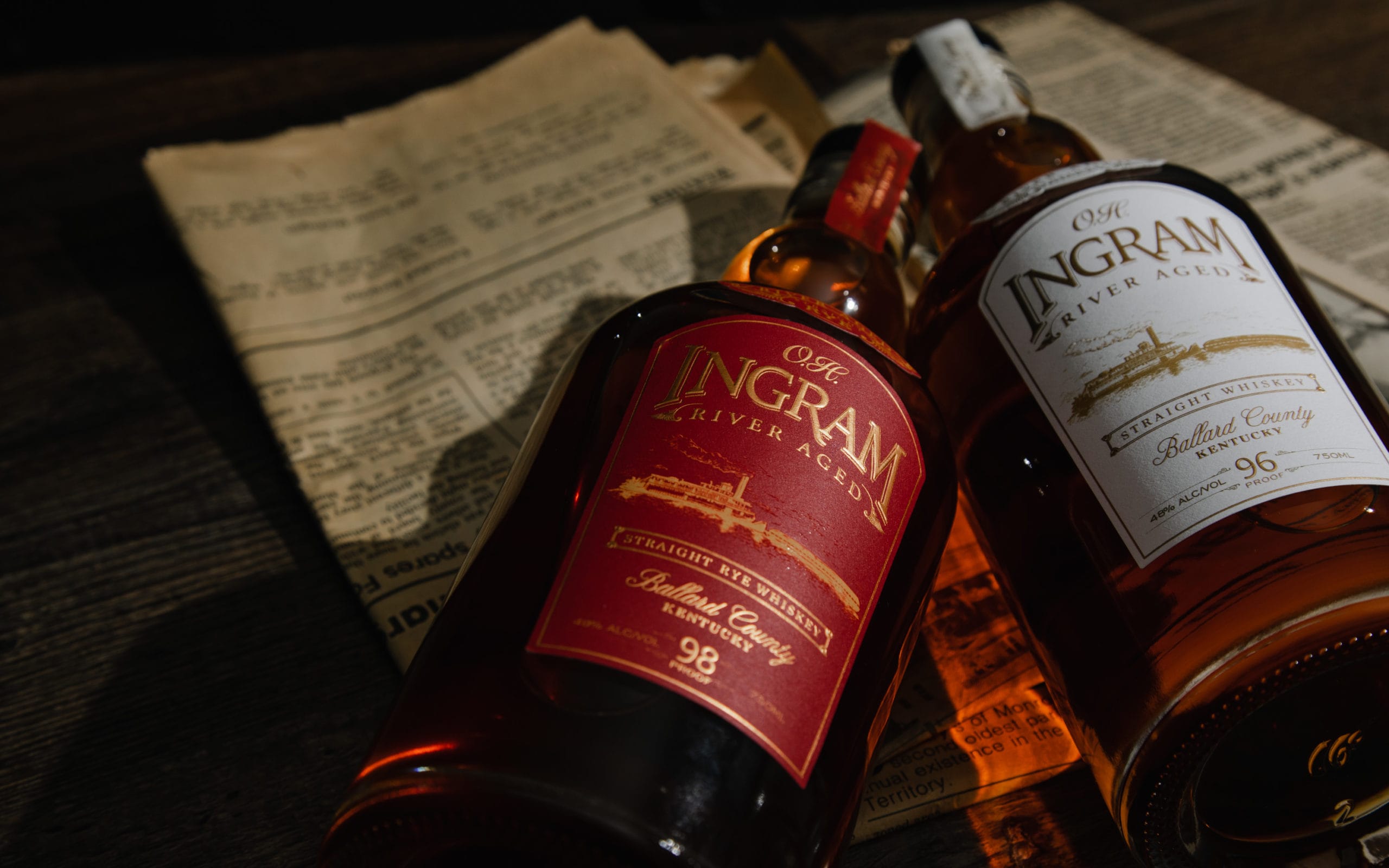
New Clocks for Timeless Spirits
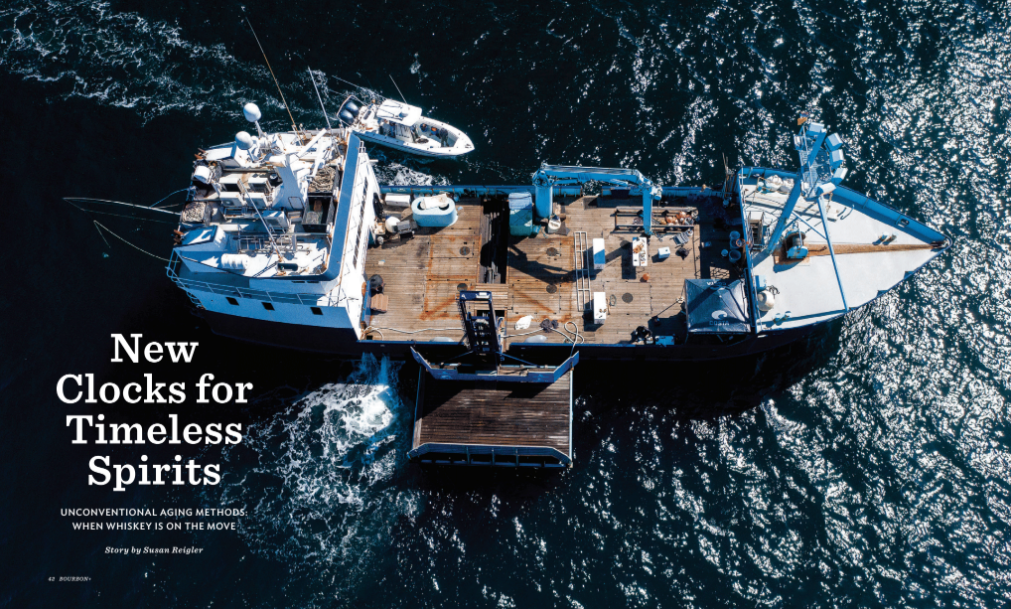
Do you like bourbon whiskey & rye?
Aged in subsonic bass, a nautical place,
or with country stars from on high?
Would you drink them on a boat?
Sip an ice-creamfloat in a captain’s coat?
Would you sip them on the river?
Cast, lure, and swigwhile a fish you deliver?
Would you, could you to loud booming music?
At a dance hall, in a highball?
Could you, would you on a concert tour?
Across the country, slurping more?
Whether on a barge with Pokey LaFarge,
Or having a rave in a stave …
Sippin’ a Glencairn while seafarin’,
Or on the road again with your Shotgun Willie friend …
Sling, smash, sour, squirt, or swizzle,
When it’s a nip of the dram with the band,
Scrumptious flavor is all we demand!
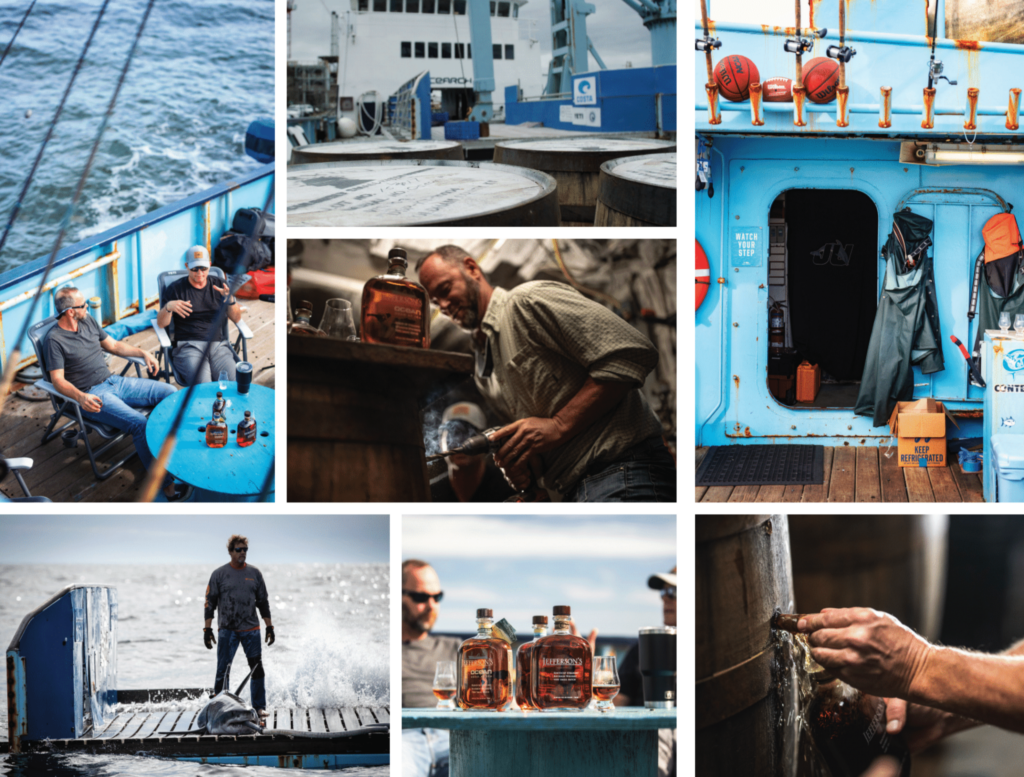
Almost all new-make whiskey coming from the still is put into barrels for aging, and those barrels are typically placed in a rick house and allowed to mature for up to seven years and sometimes, depending on the brand, much longer. That maturation involves acquiring both color and a complexity of flavors from the toasted and charred interior of the barrels. This happens as the spirit seeps into the wood when it expands in heat and is forced out again to mingle with the liquid in the barrels when the temperature drops.
Unless new barrels are being rolled into place or removed for dumping and bottling, rick houses are very quiet places. The cycle of into-the-wood and out-of-the-wood, while active, is more like someone breathing while sleeping. It’s appropriate, then, that the age statement on a bottle of 10-Year-Old Rip Van Winkle, for example, says: “Asleep Many Years in the Wood.”
Most distilleries rely on nature to regulate this process through seasonal changes of temperature and humidity. There are a couple of notable exceptions. Brown-For-man’s Old Forester and Woodford Reserve Distilleries heat-cycle their warehouses. Buffalo Trace Distillery uses this technique in some warehouses but not others. Maker’s Mark does not control the temperature in its warehouses, but it does rotate barrels from one floor of its warehouses to others, which no other major distilleries do. After all, a full bourbon barrel weighs about 500 pounds when first stored. (Evaporation takes place during aging, but even a barrel with a few years on it will still be a heavy lift.)
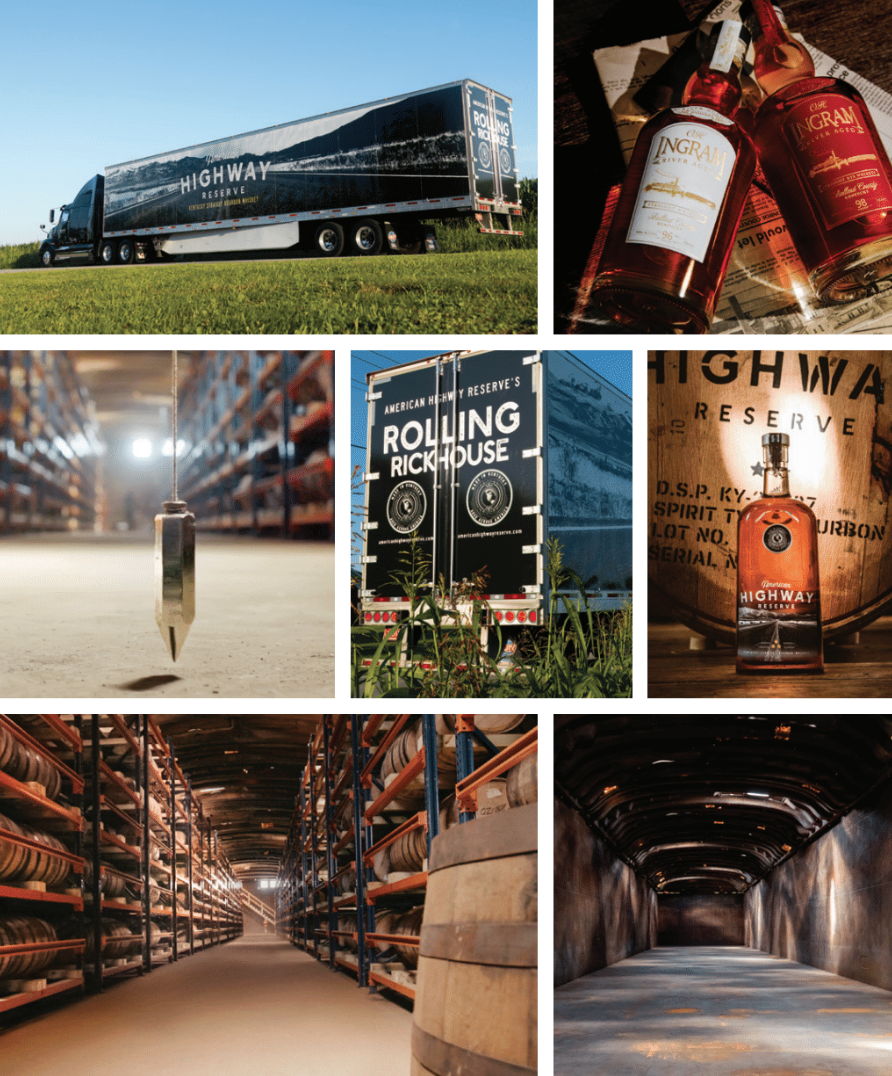
There are a handful of whiskey makers, though, who practice what can be thought of as sleep deprivation. They keep their bourbon in a constant state of heightened agitation.
After Tuthill town Spirits Distillery in Hudson Valley,New York, was founded in 2003, its first release, Hudson BabyBourbon, was stored in smaller casks than the traditional53-gallon barrels and aged less than four years. The distillery played heavy bass music via large speakers in the warehouse at night, supposedly to shake the bourbon and keep it moving in and out of the barrel interiors with a relatively low surface area. Did it work?
Bourbon historian and blogger Michael Veach cites what he was told several years ago by the late Lincoln Henderson, retiredMaster Distiller for the Old Forester and Woodford Reserve brands and founder of Angel’s Envy. “Lincoln said that you get a lot of flavor from the wood in the first six weeks and you spend the next four years trying to get rid of it.” Veach went on to say,“That’s because early on you’re getting a lot of really bitter, nasty oak tannins—a lot of astringency. The secret [to eliminating the bitterness] is to let time break those chemicals down into something sweeter. You want those caramelized sugars from the barrel, which take time to come out, and it also means you need a lower barrel-entry proof if you’re going to do a smaller barrel to extract those sugars faster. But there’s just no substitution for time.”
Perhaps that’s why Tuthill town has discontinued its HudsonBaby line and instead released Hudson Whiskey NY bottlings, which are older and mostly aged in more conventional barrels.In 2008, Crestwood, Kentucky-based Jefferson’s ReserveBourbon’s founder Trey Zoeller noticed when he was on a friend’s boat fishing off the coast of Florida that the bourbon they drank while casting sloshed around a lot in the bottle. He wondered what would happen if he sent some barrels to sea. And that’s how Jefferson’s Ocean came to be.
Not surprisingly, there’s a mild salty note to the different releases of Jefferson’s Ocean. That first voyage was of five barrels of new-make whiskey, which stayed afloat during the rolling and pitching of the boat for over three and a half years.Other batches have consisted of fully aged whiskey sailing for an additional eight months.
Unless new barrels are being rolled into place or removed for dumping and bottling,rickhouses are very quiet places. The cycle of into-the-wood and out-of-the-wood,while active, is more like someone breathing while sleeping.
O.H. Ingram River Aged Whiskey has put a freshwater spin on Zoeller’s idea. Ingram whiskeys are “distilled in Indiana”according to the labels. The first releases were of rye, so presumably the distiller is MGP in Lawrenceburg, which supplies a number of sourced brands. O.H. Ingram has since released some bourbons, too. Ingram, which began in the 19th Century as a river barge company, uses one of its barges as a floating warehouse anchored on the banks of the Mississippi River near Wickliffe, Kentucky. As the river rises and falls, so does the barge with the barrels it holds. (Happily, the whiskey doesn’t exhibit any flavor notes of muddy catfish.)
Want to keep your bourbon aging on the go, but you don’t have an aquatic vessel? No problem. Take it on a road trip. That’s the technique embraced by American Highway Bourbon, a brand launched last year by country music star Brad Paisley. Paisley’s company sourced barrels of 3-year, 13-year, and 15-year Kentucky bourbon, loaded it on a 53-foot semitrailer and sent it on a7,324-mile coast-to-coast trip through 25 states. This recreated Paisley’s concert tour of 2019. The well-travelled whiskey will be blended by Bardstown Bourbon Company and released later this year. The next release from the so-called Rolling Rick house will be of bourbons that hit the road to age during the singer’s 2021 tour.
So, whether drinking a mint julep on the Mighty Mississip’
or a Rusty Nail as you set sail…
Perhaps a Hot Toddy at a Dance Party,
Or a Sazerac on a semitrailer’s back …
No matter where or how it’s aged,
Bourbon’s flavor is always center stage.+
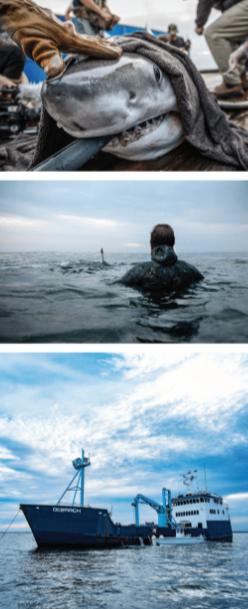
The question remains: Other than the faint salt note inJefferson’s Ocean, is there a discernible difference in whiskeys aged while in motion?
Gary Spedding is a biochemist, analytical chemist, sensory specialist, and owner of Brewing & Distilling Analytical Services, which has locations in Denver, Colorado, and Lexington, Kentucky. He gave a thoughtful answer when asked if there was any scientific basis for this whiskey agitation. “I think that there’s beginning to be, but we’re really at the very early stages of figuring this out. I think they produce some good products, but what I find within the industry as a whole—and this is not putting down anybody in any way, shape, or form—is a lack of scientific training, and people don’t understand controls.”
Controlled experiments would involve aging the same whiskey for the same amount of time in barrels of the same toast and char levels with a group stored traditionally and a group stored in motion. That’s further complicated by the inherent variation of one charred oak barrel from another.And every nuance of chemical reactions that happen in the barrel are hard to gauge. Spedding recalled, “We have a couple of guys here in Kentucky who were wanting to monitor spirit production from start to finish. But it involved putting probes into the barrels, and the distiller said, ‘No way. No, you’re not putting anything into the barrel,’ since that could potentially interfere with flavors.”
Ocearch hosts the Jefferson’s aging experiment at sea while
conducting research on sharks, combining innovation and the pursuit
of knowledge across vastly different domains.

The question remains: Other than the faint salt note inJefferson’s Ocean, is there a discernible difference in whiskeys aged while in motion?
Gary Spedding is a biochemist, analytical chemist, sensory specialist, and owner of Brewing & Distilling Analytical Services, which has locations in Denver, Colorado, and Lexington, Kentucky. He gave a thoughtful answer when asked if there was any scientific basis for this whiskey agitation. “I think that there’s beginning to be, but we’re really at the very early stages of figuring this out. I think they produce some good products, but what I find within the industry as a whole—and this is not putting down anybody in any way, shape, or form—is a lack of scientific training, and people don’t understand controls.”
Controlled experiments would involve aging the same whiskey for the same amount of time in barrels of the same toast and char levels with a group stored traditionally and a group stored in motion. That’s further complicated by the inherent variation of one charred oak barrel from another.And every nuance of chemical reactions that happen in the barrel are hard to gauge. Spedding recalled, “We have a couple of guys here in Kentucky who were wanting to monitor spirit production from start to finish. But it involved putting probes into the barrels, and the distiller said, ‘No way. No, you’re not putting anything into the barrel,’ since that could potentially interfere with flavors.
Ocearch hosts the Jefferson’s aging experiment at sea while conducting research on sharks, combining innovation and the pursuit of knowledge across vastly different domains.
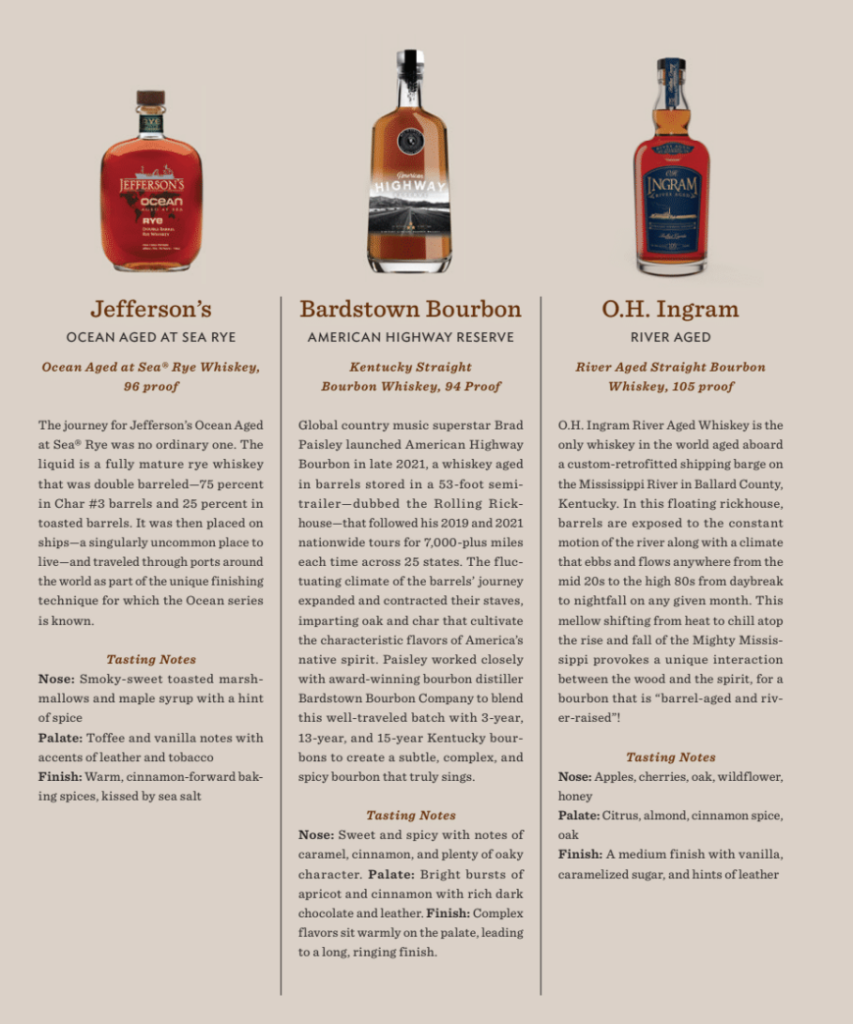
THE END OF THE ROAD:
The journey may out weigh the end result, but the introduction of unconventional aging methods can only enhance the flavor profiles of those who dare to venture.
